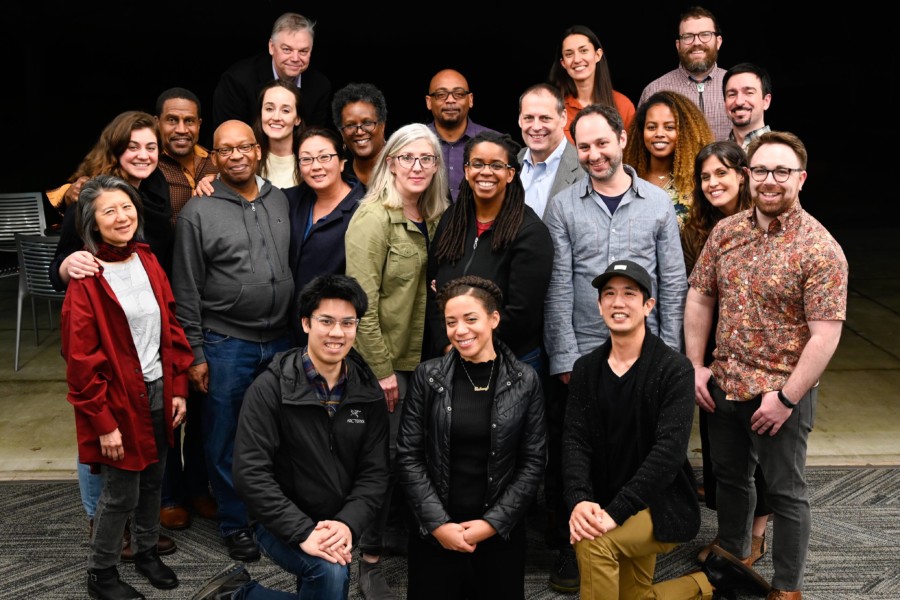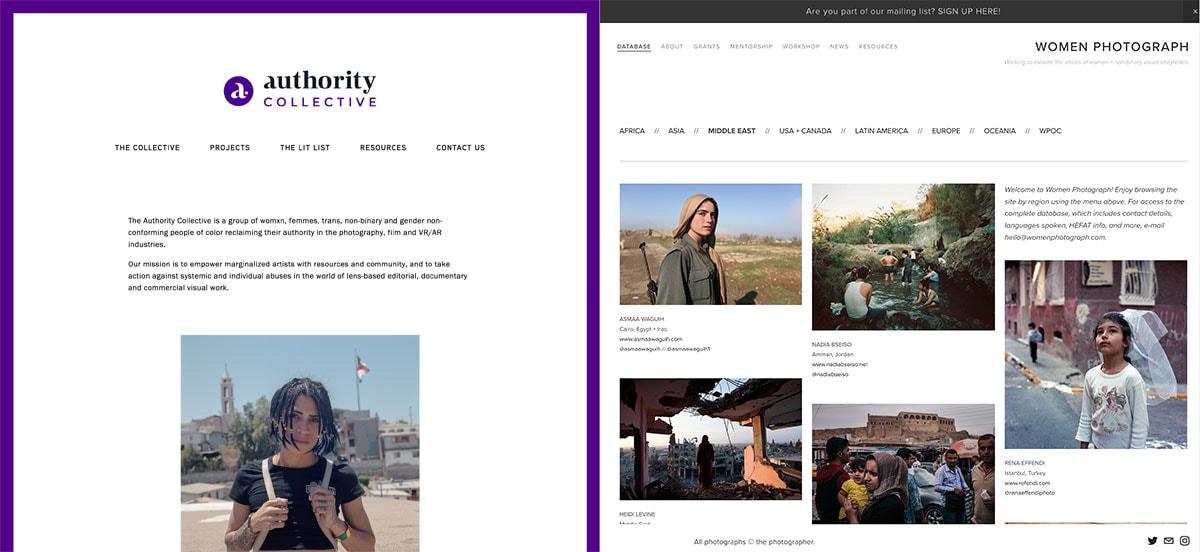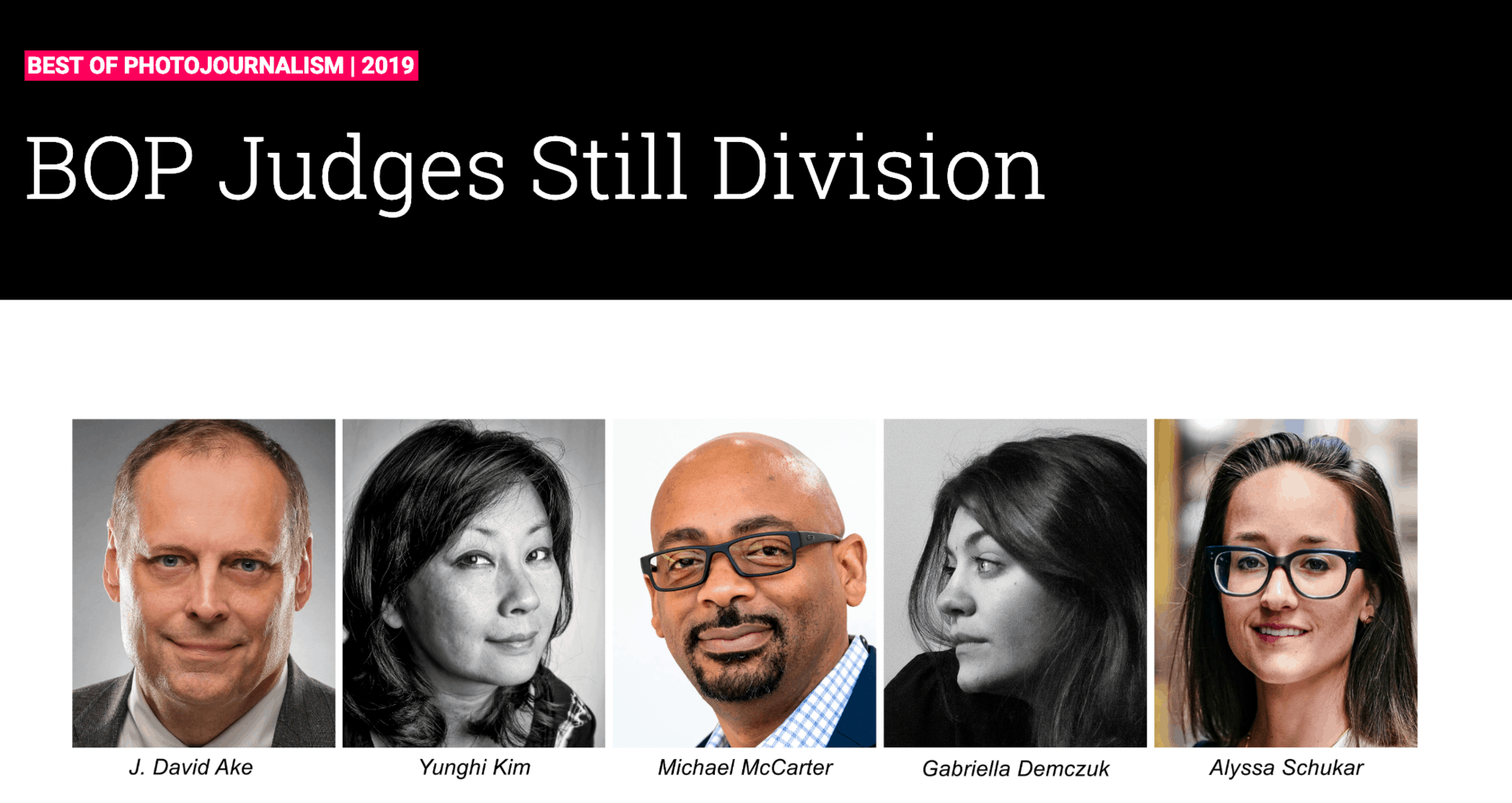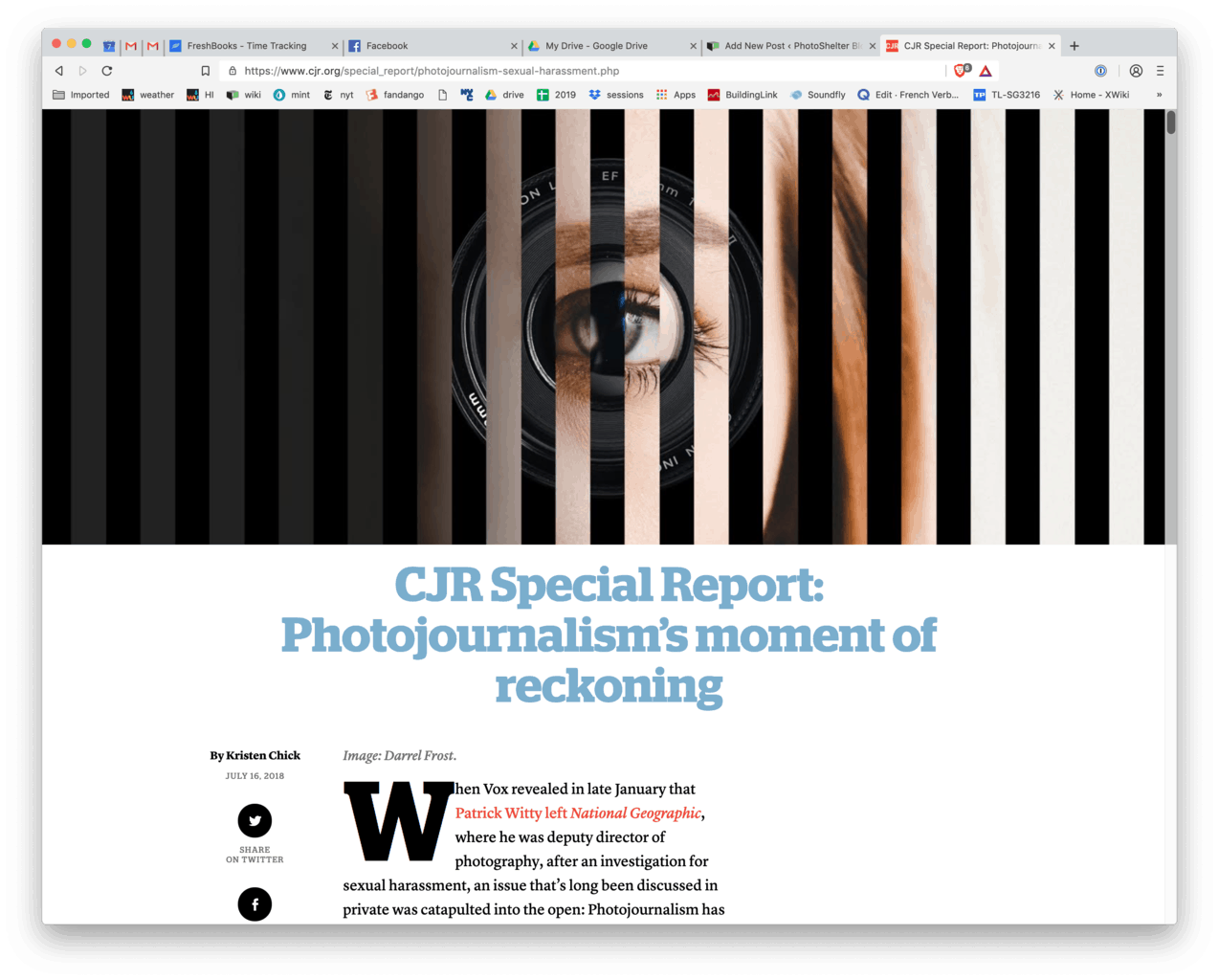Share
The NPPA Confronts Issues of Diversity and Inclusion within Photojournalism
Diversity, inclusion and representation have become increasingly salient topics as many organizations – from government to restaurants – grappl...

Diversity, inclusion and representation have become increasingly salient topics as many organizations – from government to restaurants – grapple with a generational shift that is forcing a re-examination of institutional bias, racism, sexual harassment and assault, misogyny and more. After many years of “open secrets” in the photojournalism industry, a scathing report from the Columbia Journalism Review revealed how pervasive and insidious the issues are within the industry.
The photojournalism industry may have a way to go, but progress is being made. The National Press Photographers Association (NPPA) recently adopted a “diversity and inclusion initiative” at their Annual Board Meeting. More importantly, real changes can be seen in the Board composition (50% women) and the diversity of their Best of Photojournalism juries.
I reached out to two of the volunteer Board members – NPPA President Michael P. King and photographer/photo editor Brent Lewis – for an explanation on how the initiative came to be.

The NPPA Board recently adopted a Diversity and Inclusion declaration. What was the impetus for the discussion and the passing of the board resolution?
Michael: Our Board members understood that NPPA couldn’t sit on the sidelines while the rest of the country had really important conversations about inclusion, diversity, and harassment. We felt compelled to examine our own efforts, identify some areas for improvement, and actively engage in those conversations as an association. And furthermore, we couldn’t just talk about it or harp on the current state of affairs. That doesn’t make change. We felt we needed to propose something to do.
NPPA brings people together in a lot of different ways. Whether its for educational workshops, conferences or contests, we want to make sure that we’re bringing everybody together. Anyone who has planned these types of events knows that one of the most stressful and important parts is getting the speakers, judges, or faculty lined-up. We listened to our event chairpersons, event attendees and students, and the Board felt that this was one specific area where we could potentially make an impact. By slowing down to deliberately think about who we’re including in these small, influential groups – that we proclaim to be comprised of industry leaders – we can continually ask ourselves if we are reflecting the diversity that really exists within our industry and the communities we cover. Diversity can and should be our strength, and our Board was determined to lay a foundation to make that happen.
We see inclusion as inseparable from ethics. A lot of the points in our Code of Ethics are about how we work, or the product of our work, but there are equally important points about how we treat people, including other journalists. The command to “defend the rights of access for all journalists” traditionally meant physical access to news scenes for reporting purposes, but we should embrace that on a much more general level. We can and should be working to ensure that all journalists have access to professional opportunities.
Brent: The country, in general, is having this moment of reckoning when it comes to the idea of diversity across race, gender, cultural backgrounds and making sure that everyone has a seat at the table. So it wasn’t too long before it was journalism’s turn to be looked at. And I think with so many of the board members, young and experienced, reflecting on their times in this industry, we have seen that not everyone has a seat at the table nor is equally represented to the point they should be, comparable to the populations that we cover.
Once gaining that perspective and understanding of the situation, it only made sense to put these ideas and guidelines into a formal declaration that will help move the needle in the direction of getting the NPPA and the industry in line with the country and world that we cover. It’s a step in the direction and is going to help continue building that level of inclusion that our industry needs.
How would you describe the current state of diversity and inclusion within the photojournalism industry?
Brent: I would be lying if I said that it was even close to were it could be or even was in the late 90s/early 2000’s. Overall, I feel that, until recent year(s), the photojournalism industry hasn’t been seen as a place that many folks felt welcomed or even supported. If you were a young person of color trying to make their way into this industry, there weren’t too many places to find people to lean on or just have a real conversation about finding your path from the point of view of being a young person of color. Looking at stats and talking with a lot of my female friends about their experiences, in colleges, you see an overwhelmingly amount of women in classes, but it doesn’t translate with them coming into the industry because of numerous factors.

I think in the last few years, that trend has begun to shift. A lot more women have started to tear down those glass ceilings and become household names from speakers to assignments across publications. People of color, men and women, have seen the growth in the industry as well with editors, having resources, like Diversify Photo, Women Photograph, Native Agency, The Authority Collective, etc., to find new people that possibility weren’t on their radar before. It’s a really exciting time right now because it wasn’t that long ago, that I was a student at a conference or a workshop and was the only Black face in the room.
The Board articulated a number of guideline in a non-binding resolution. What practical steps do you see being undertaken to adhere to these guidelines?
Michael: Well, I would not call it “non-binding.” The resolution inserted language into NPPA’s nonprofit Policies and Procedures document, and it is enforceable. But I think what you’re getting at is that this is far from “ruling with an iron fist.” The Board considered that approach, but we were (wisely, I think) steered in another direction. I don’t think mandates are necessarily the best way to lead people, especially volunteers, and especially on this issue.
We’re asking our event and program chairs to strive to have their juries, faculties and speaker lineups include at least 50% women and non-binary individuals, and at least 30% people of color. We’re also asking them to include people with nontraditional backgrounds and a variety of experience levels.
I hope that all of our programs reach these goals, but what’s most important is that everybody is thinking about inclusion early on, in the planning stages, and then doing their very best to convert those thoughts into results. If they can do that, it’s going to enrich the experience of our attendees and participants and hopefully ripple outwards into the industry.
Brent: When it comes to practical steps to adhering to the guidelines, it really comes down to the idea of asking around and digging deeper when it comes to looking for speakers or judges and doing it with intent to find a diverse group of people that reflect the country and world that our members cover. For many years, if you look at conferences and workshops in our industry as a whole over the last 10 years, it was this circuit of speakers, presenters, judges, and reviewers that the industry didn’t really break from.
It was the Pulitzer Prize winner, a POYi winner, an older established photographer with an archive that inspires and so on and so on. It was something easy to do especially since their names were always around. What we are looking to do is to break that cycle. We have a wealth of knowledge and connections from the Board to photographers, videographers, producers, editors, etc. that are brilliant and can bring new perspectives on everything from editing to telling stories to navigating the career from the first day to retirement. We want to tap into those more and bring in new voices to serve our current membership and future membership even more.
I was actually pleasantly shocked to see the diversity of the BOP juries, which were announced ahead of the Resolution. It is a stark contrast to most contest juries. How important was the discussion of jury diversity to last year’s newly formed contest committee?

Michael: I’m so glad that you noticed that. The Board has been talking about this inclusion initiative for several months, and even though we didn’t approve this resolution until January, the new Best of Photojournalism committee was formed last year with these goals in mind. We asked them to build their judging panels knowing that these inclusion goals were on the horizon. The Board and I have been really pleased with how these groups have come together, and I think it is proof that having a policy – even having one in the works – can move the needle.
Brent: Oh it was huge! Everyone handling BOP was thinking and working it even before we passed the resolution and they did an amazing job. They walked into the roles and basically wanted to make sure that this set of judges was balanced and from all walks of life. Like I mentioned before, it was a lot of conversations about balancing everything out beyond race and gender. We have some amazing freelance photographers alongside of some of the best photo editors in the world or people that have working for 5 years alongside those who have been working 30 years. I think that led to this year’s judging being amazing and one that I know I tuned into watch for the conversations alone. Everyone brought their thoughts, ideas and experiences to decide on what work would truly be the best of the best from 2018. It was funny because even I was sitting there looking at the judges like “Wow! That is how it is supposed to be done.”
The NPPA Board has a nearly 50/50 split of men and women, but poor representation of POC. On the one hand, nominations are open and individuals often nominate themselves – so there’s nothing to prevent a POC from running. On the other hand, POC often don’t run when they see poor representation. Has the board had any discussions about this issue?
Michael: By my count there’s actually fewer men than women on the Board, and we’re comprised of about 25% people of color. That’s come together somewhat organically, since a sizable portion of our Board is elected by our membership. Part of our new policy instructs everyone in NPPA’s leadership to recruit and encourage candidates for elected and volunteer positions with inclusion in mind. The NPPA president also has appointment powers to fill three seats on the board, and those appointments can obviously influence the inclusion balance, as well.
I’ve been on the Board in some capacity for nine years, and I can remember times when there were no people of color in the room, and only a couple women. And I would bet we have more young professionals on the Board now than we ever have in our past. In relatively short time, our Board has come to better represent our membership and the industry. But like the industry we represent, we can still do better.
Brent: This is one of those situations that truly also stems from way too many years of an industry not feeling inclusive, so it winds up being reflected in organizations that stem from them. But much like we are recognizing this in the photojournalism as a whole, we are working to do more with our board and the make up. Just like I wish there was a way to snap a finger and every single part of the industry was on an even playing field, it takes work and time. I think we are at a really good starting point right now and I feel confident with the changes and new energy at the table, it’s going to get even closer to hitting the marks of equal representation in years to come.
Last year, Kristen Chick wrote a special report for the Columbia Journalism Review on sexual harassment within the photojournalism industry, which highlighted major problems and excoriated a number of prominent photographers. Media coverage has seemingly died down, but it’s hard to fathom that the problem has been eradicated. The NPPA Judiciary committee has a process for investigating and adjudicating complaints, but has it ever been used? Of the myriad of issues that the NPPA contends with (from drone laws to copyright to attack by the President), where does the issue of sexual harassment fall in 2019?

Michael: The CJR report was so disturbing. Harassment of all kinds will continue to be a huge issue, and one that we are going to continue to shine a light on. We address harassment in our Code of Ethics (“Do not engage in harassing behavior of colleagues, subordinates or subjects and maintain the highest standards of behavior in all professional interactions.”) and we have a robust harassment policy, too.
I think there’s a relationship between harassment and inclusion. Inclusion lifts people up while harassment can stall, divert or destroy a person’s career or life. I hope that by fostering an inclusive culture and professional environment within NPPA and at our events, we can help neutralize aspects of our industry’s culture that enable harassment.
Our Judiciary Committee does get used, but in my opinion it is underutilized. Last year we changed our reporting standards to make it easier for members to bring a complaint: Any NPPA member in good standing can file one. It needs to be endorsed and signed by three members in good standing, and include all the evidence and facts. Those signatories don’t need to have firsthand knowledge of the accusations, or evidence. They just need to find enough merit in the accusations to warrant adjudication. We actively encourage our members to make use of the process. Still, on average, the process is used less than once a year.
Over the past decade, the Judiciary Committee has handled complaints relating to harassment, threats of violence, and other violations of our Code of Ethics. The committee can only levy penalties relating to membership. Occasionally we get complaints where the person named in the complaint isn’t an NPPA member, so we can’t penalize them. But we can sometimes respond in other ways (with a news story, for example) when nonmembers are involved.
NPPA’s attorneys talk to any member who reaches out on sexual harassment issues. It’s also a topic at our Women in Visual Journalism conference. We’re going to keep looking for other ways that we can support targets of harassment. It won’t be tolerated in NPPA, and it shouldn’t be tolerated in visual journalism.
Like any trade organization, the NPPA faces challenges with membership growth – and many younger entrants into the industry fail to understand the relevance and/or importance of such organizations. What do you think are the most important services that the NPPA provides? And in what areas do you think it needs to improve and/or show more leadership and value?
NPPA needs to do a better job of explaining our value to non-members. We also need to ensure that those of you out there who are members are utilizing all the benefits at your fingertips. I think “the most important service NPPA provides” is different from person to person. I think NPPA has something for everybody:
Maybe you view things transactionally, and if you’re going to shell out money for a membership, you want a return on your investment. We have a solid array of members only discounts for equipment and liability insurance, software, website and cloud services (PhotoShelter is among them!), bags, and computers. Our most recent addition is 20% off new or renewed Canon Professional Services memberships. As a member, you can enter Best of Photojournalism for free. Lots of members ask for and receive advice on a variety of issues related to our profession, like business practices, legal and ethical issues, and copyright.
Speaking of those issues, maybe you love taking a stand. Whether it’s ethics, the First Amendment, copyright, or drones, there isn’t another association out there that advocates for visual journalists like the NPPA does. NPPA and our legal team are there for you, because the absence of our voices will inevitably be filled by others. We’re so much stronger in numbers! Maybe you think NPPA is now in a better position to make progress on diversity and inclusion. Join us and help us steer the association and the industry in the right direction.
Brent: For me coming up in the industry back in 2008, NPPA gave this feeling of having a community and being part of something that was bigger than just yourself. If you have questions about breaking into the freelance market and how you should prepare yourself for it or legal advice about a variety of issues that arise or what is my favorite which I really getting excited for going forward, are the mentorships that are available.
And with the amount of staff jobs dwindling and many people jumping into freelance without having all the business skills or even just that network that you have in newsroom to grow from, this is more invaluable than ever.
And pivoting off that idea and the makeup of the board, we have a set of people that are coming from levels of this industry, that are looking to showcase what NPPA already has to offer and the amazing things that we have cooking up for the student photojournalist that’s looking for inspiration, to the recent graduate making that decision to go after a staff job or take on the life of a freelancer, to the mid-level photographer that is looking to try something new. It’s so many get things on the way and honestly, as a NPPA member since 2008, it has never been a more exciting time than now to be apart of this organization.
This interview has been lightly edited. NPPA BOP jury photo by Mark E. Johnson.


